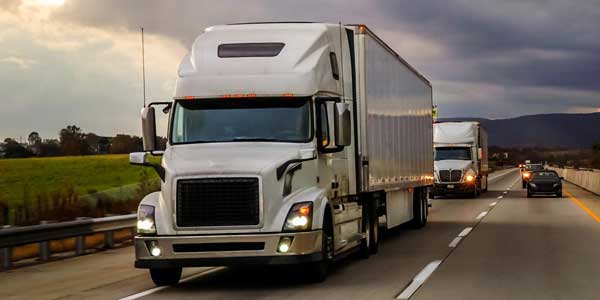Every season comes with its own risks, especially out on the road. As rain falls, roads freeze, and traffic during the holidays, you want to make sure you are always thinking ahead behind the wheel. While you can never truly predict when an accident will happen, you can practice defensive driving strategies to minimize the risk as much as possible. These safe driving tips are some of the many ways to protect yourself and those around you while driving.
Maintain a Safe Stopping Distance
Many people drive much too close to the car in front of them than they should, considering how long the average reaction time is for the average person. On top of that, your vehicle needs time to fully engage the brakes and bring the car to a halt even at relatively low speeds. Even driving 35 miles per hour, your car needs between 60-100 feet to come to a full stop on a dry road. This increases to 120 feet or more in wet conditions and over 600 feet on icy roads.
In order to stay safe, you want to avoid driving right behind the car in front of you. Consider the present conditions and think about how long it would take for your car to come to a full stop if you had to hit the brakes in an emergency. Chances are, you are going to also experience some skidding due to the momentum, not to mention the lack of grip on roads with water or snow. The standard distance recommended is 2 car lengths on the freeway and 1 car length on city streets, which is based on the average speed you are driving. However, it never hurts to err on the side of caution in stormy or snowy weather and give the other drivers plenty of breathing room in case they need to come to a sudden stop.
Drive the Speed Limit or Slightly Below
No one likes to go under the speed limit, but in extreme rain or snow, it may be the best choice you can make to avoid an accident. In some cases, it can be just as dangerous to drive too slow as too fast, though this is usually under normal weather conditions. You certainly don’t want to be going 80 miles per hour in sleet and slush, or in a torrential downpour. If your visibility is compromised due to rain, fog, or any other conditions, you will want to slow down and ensure you can really react properly if something comes out of nowhere.
Hydroplaning is the biggest concern at higher speeds when wet roads are present. This phenomenon happens when your tires are moving too quickly over a wet surface and there is not enough time for the moisture to be channeled away. The water on the road actually lifts the tires off the road, causing them to lose traction due to loss of contact. Hydroplaning is very scary as the vehicle stops responding to you the same way.
It is critical to remain calm and take your foot off the gas to allow the car to slow down naturally. You never want to hit the brakes or turn suddenly as you will not have the traction needed to actually correct or slow the car. Turn on your hazards to alert the vehicles behind you that you are not in control as you let the speed decrease, and if you can resist the urge to react impulsively, the vehicle will eventually come back to a speed that allows the tires to make full contact with the road again.
Replace Your Tires if They Are Balding
When your tires don’t have enough traction, they are especially dangerous on wet roads. It is natural for your tires to begin to lose their tread over time, which is why it is so important to replace your tires regularly. Make sure to pay close attention to the condition of your tires and get your vehicle in for new ones if they start to look worn down. A quick trick to check the wear on your tires is the penny check, where you place a penny upside down in between the tire tread. If you can see the top of Lincoln’s head, then it’s time to get a replacement.
Since tires are an expensive routine purchase, it is a good idea to plan ahead and save throughout the year. If you can only afford to do two tires, make sure they are mounted on the rear axle. Fresh tires on the back of the car as opposed to the front can help provide greater traction, reducing your risk of hydroplaning. When you get your new tires, you may also want to invest in all-season tires or even winter tires. These types of tires are designed with special tread to ensure you can maintain more traction even in slicker weather conditions. By talking to your local mechanic or auto shop, you can determine which ones will be the best for your specific vehicle and driving needs.
Check Your Insurance Coverage Annually
Even the best laid plans sometimes fall short, so make sure your auto insurance has the right coverages to protect you in the event of an accident. An annual review is a great way to keep your insurance updated, and fall is the perfect time to do this. Your Personal Lines Insurance Agent at Nicholson & Associates can help you review your policy and help you make any changes to cover yourself all season long.










